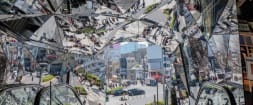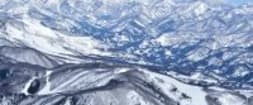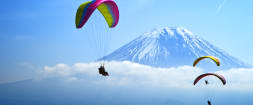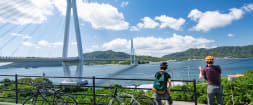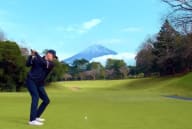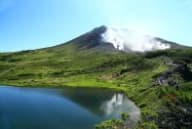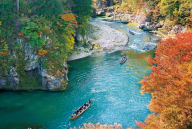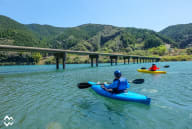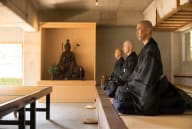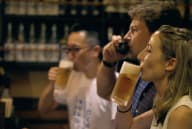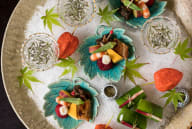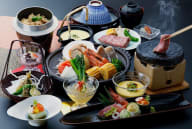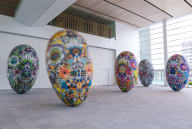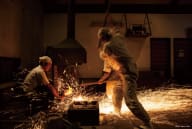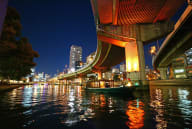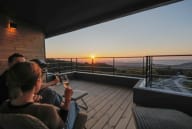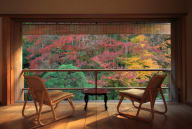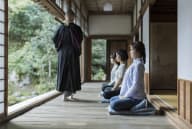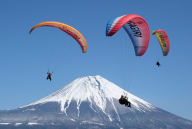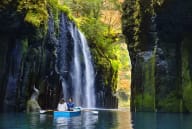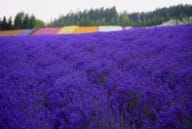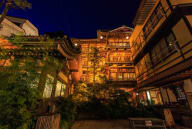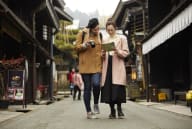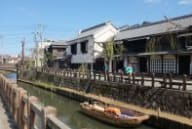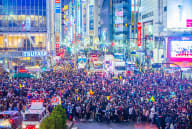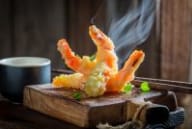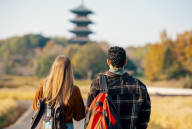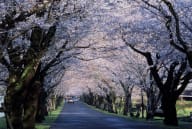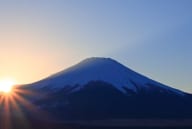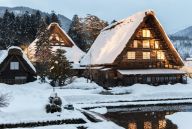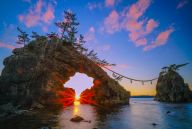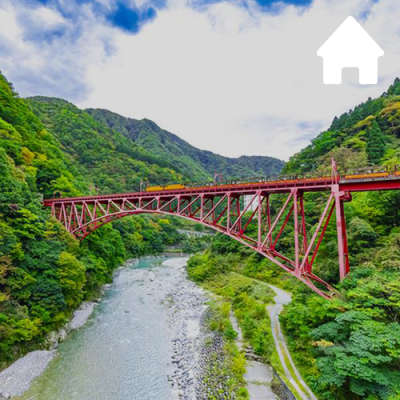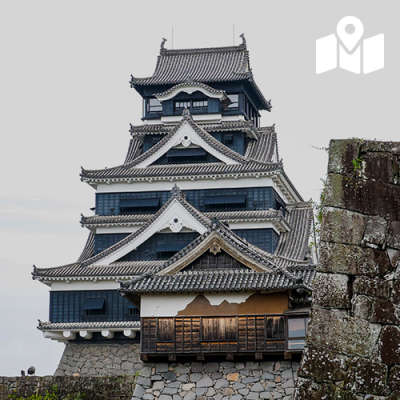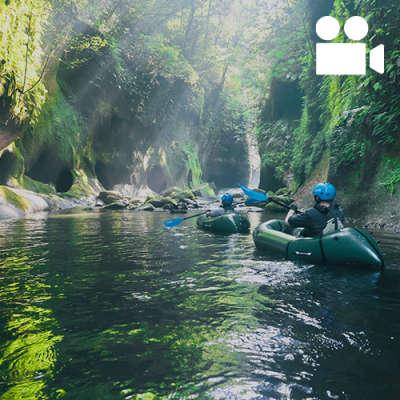Use the
Planning a Trip to Japan?
Share your travel photos with us by hashtagging your images with #visitjapanjp
Blessed with seas, mountains, rivers, and deep forests, Hokkaido and the Tohoku region showcase Japan’s seasons in vivid relief—each locale offering its own charm. Here, human culture has long grown in step with nature, fostering unique traditions while sharing the land with diverse forms of life. Savor pristine ingredients and mineral-rich hot springs, witness living folk arts, and explore landscapes preserved through generations of wisdom and hard work. As you roam these beautiful vistas, you will feel the countless “lives” that flourish all around you.
Local Insight
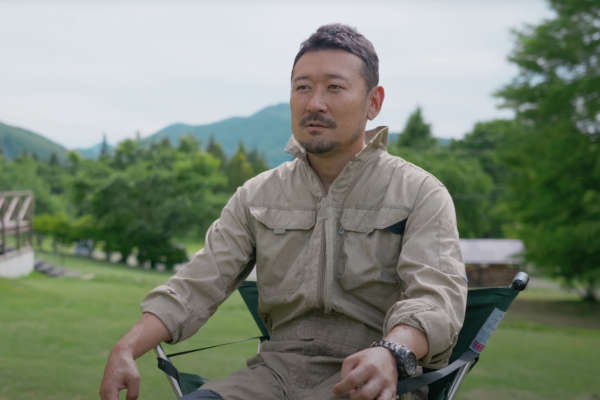
We asked Koji Watanabe of Aizu Dream Development—overseeing the Numajiri Extreme Onsen and Extreme Flight Scenic Cruising experiences—to share his insights on exploring Aizu’s wild landscape from ground and sky.
Q. What makes these tours special?
Our Extreme Onsen adventure turns Mt. Adatara into a vast open-air spa. With a certified guide, you trek to a wild spring about 1,300 m above sea level, pausing for sweeping views of Shiraito Falls and the mountain ridge. At the destination, Japan’s most prolific single source gushes so forcefully it becomes a hot-spring river—an untamed bath no developed resort can match. Its pH 2.1 water, as sharp as lemon juice, gives your skin a memorable zing. For a sky-high thrill, try our Extreme Flight Scenic Cruising. Glide above Lake Inawashiro, Mt. Bandai and Mt. Adatara—both counted among Japan’s 100 Famous Mountains—and the patchwork-like plains of Aizu for an unforgettable aerial panorama.
Q. What makes the Aizu area so appealing?
Aizu stands out because it’s easy to reach—about two hours from Osaka by plane and car—yet feels completely removed. Around Lake Inawashiro, Goshikinuma’s vivid ponds, and Mt. Bandai, the landscape delivers a true resort atmosphere and some of Japan’s best hot-spring country. In Aizuwakamatsu, rows of historic buildings and the iconic Tsuruga Castle evoke the samurai legacy that inspired The Last Samurai. The spirit of Japan’s warrior past remains vividly alive here —a draw that’s steadily winning over international visitors.
Q. How do the tours echo EXPO 2025’s theme of “Saving Lives”?
Aizu is where untamed wilderness and centuries of history still share the same stage. Trekking volcanic slopes, soaking in a river of hot water, and soaring above crater lakes reveal how people here have always lived with the land, not apart from it. Each encounter traces the natural cycles that sustain human life—and shows how residents, in turn, protect and celebrate those cycles. In Aizu, safeguarding the earth and safeguarding ourselves are one and the same: a vivid lesson in coexistence that reminds us every footstep, every spring-water drop, and every gust of alpine wind is part of the larger work of saving lives.
DAY 1
Osaka

DAY 2
Nijo Market, Sapporo
Hokkaido
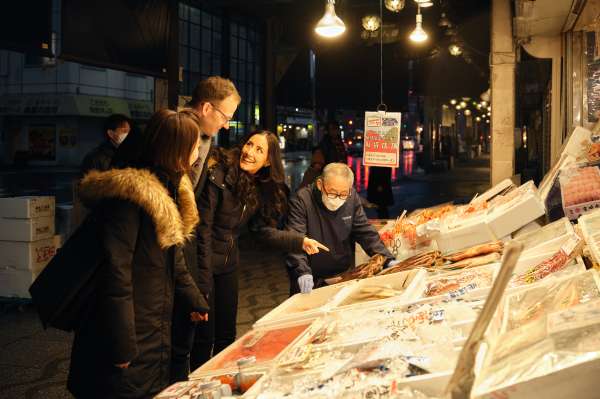
Nijo Market—Sapporo’s “citizens’ kitchen” for over a century.
Fly from Kansai International Airport to New Chitose, gateway to Hokkaido. In Sapporo—Hokkaido’s culinary capital—seasonal seafood and just-picked produce from across the island fill the stalls of Nijo Market. With a bilingual guide, browse for whatever catches your eye, and pick up gifts along the way. Then slip into a hidden local bistro, where a French chef turns your market haul into a tailor-made feast.
DAY 3
Private Tour to Yoichi, Shakotan & Otaru
Hokkaido
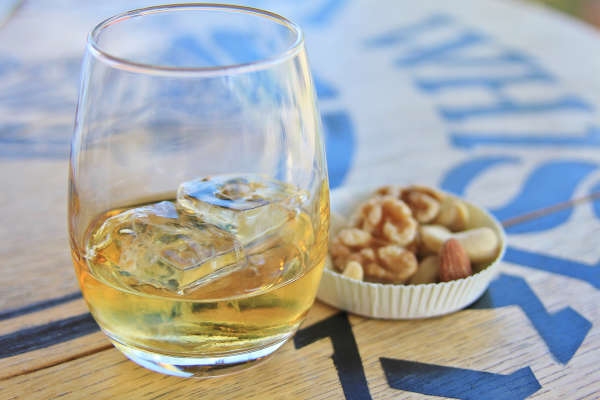
Nikka Whisky’s Yoichi Distillery—hallowed ground for Japanese whisky lovers.
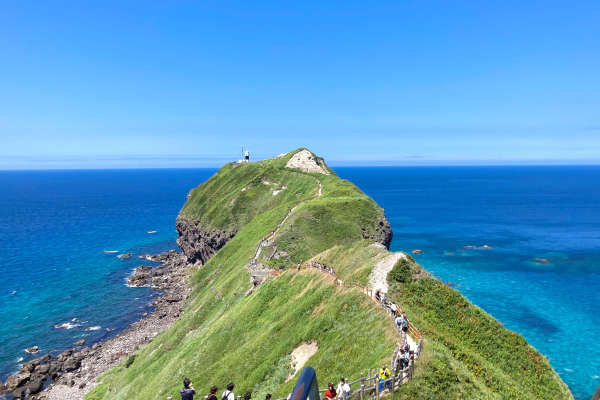
Cape Kamui and its “Shakotan Blue” sea
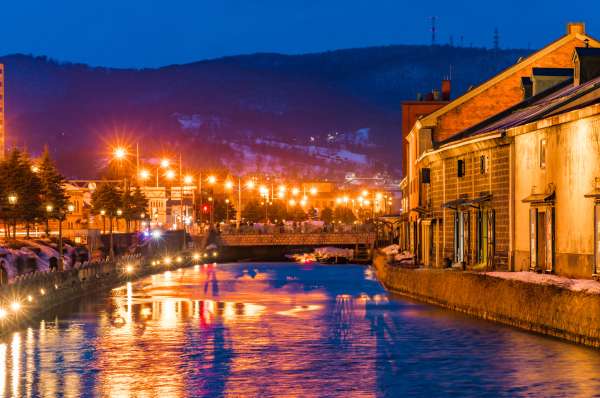
Otaru Canal—gas-lit at dusk, its 100-year-old warehouses glow with nostalgic charm.
Set off by private taxi for a day in the Otaru–Yoichi–Shakotan region, where historic streets meet dazzling coastlines. First stop is the Yoichi Distillery, the very first whisky plant built by Nikka founder Masataka Taketsuru: tour the stills, then sample the spirit that started Japan’s whisky boom. Continue to Cape Kamui in the Niseko–Shakotan–Otaru Kaigan Quasi-National Park and gaze out over the vivid “Shakotan Blue” sea stretching to the horizon. End the day in Otaru, wandering canals lined with century-old stone warehouses before relaxing in a retro café for fresh-brewed coffee and sweets.
DAY 4
Farm-Stay in Folklore-Rich Tono
Iwate
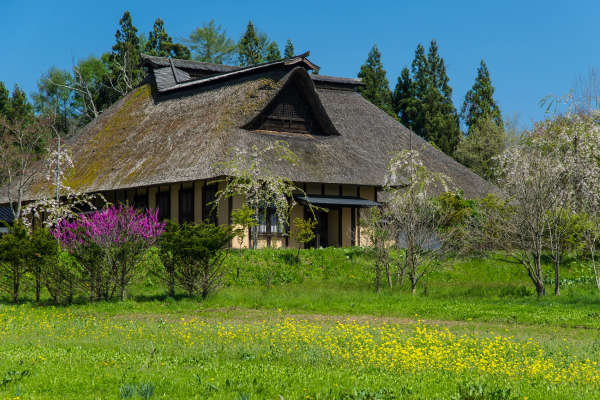
Tono Furusato Village recreates a classic rural settlement.
Fly from New Chitose to Iwate’s Hanamaki Airport, then drive about an hour into story-book countryside straight out of old Japan. You’ll arrive in Tono, land of rice fields, mountain hamlets, and the mischievous river sprites called kappa that populate local folklore. Here the best way to connect is a farm-stay: sleep in a traditional farmhouse, cook regional dishes with your hosts, and join them for outdoor chores and activities. As you share daily life, you’ll pick up the practical wisdom—passed down for generations—of how people and nature can thrive side by side.
DAY 5
Hayachine Kagura
Hanamaki Onsen
Iwate
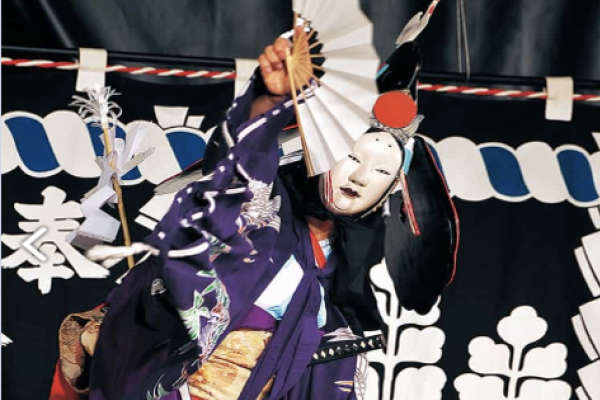
Hayachine Kagura—UNESCO Intangible Cultural Heritage.
The next day, drive about an hour from Tono to Hanamaki to delve into the 500-year story of Hayachine Kagura, a sacred masked dance now listed by UNESCO. After immersing yourself in this cornerstone of local culture, unwind the way poets and writers have for centuries—soak in Hanamaki’s renowned healing hot springs, whose silky waters are beloved as a classic toji (therapeutic) retreat and the perfect balm for travel-weary muscles.
DAY 6
Lake Izunuma-Uchinuma
Miyagi
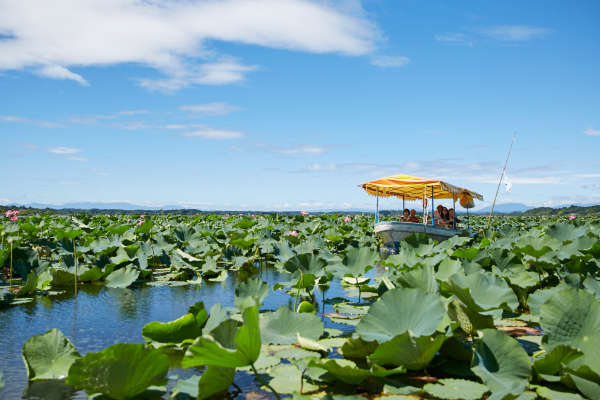
Lake Izunuma-Uchinuma—Miyagi’s largest freshwater wetland, stretching across Kurihara and Tome cities.
Izunuma-Uchinuma is a Ramsar-listed wetland site showcasing the concept of “wise-use,” which promotes both conservation–restoration and sustainable enjoyment of wetlands. Dense mats of aquatic plants create a haven for waterbirds and fish. On the tour you’ll stroll the lakeshore, cruise past vast lotus colonies by boat, and enjoy a lunch centered on Miyagi’s premium Date no Junsui Akabuta pork and seasonal local vegetables. Each step—whether on land or water—deepens your appreciation for the many “lives” this remarkable ecosystem sustains.
DAY 7
Jogi Nyorai Saihoji Temple
Miyagi
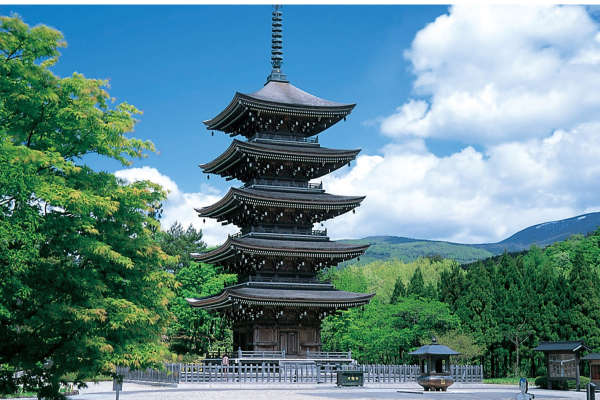
Jogi Nyorai Saihoji Temple—famed for matchmaking blessings. Along the temple path, sample local favorites like triangular deep-fried tofu and grilled yakimeshi rice cakes.
Take the Shinkansen from Shin-Hanamaki Station to Sendai, then drive roughly an hour to reach Jogi Nyorai Saihoji Temple. Worshippers come seeking the Buddha said to grant one heartfelt, once-in-a-lifetime wish. Nearby Okura Dam offers a guided SUP tour: paddle upstream through flooded forests and past waterfalls, soaking in the sculpted beauty of Okura River Gorge.
DAY8
Numajiri Kogen Lodge
Extreme Flight Scenic Cruising
Extreme Onsen
Fukushima

Extreme Flight Scenic Cruising—soar above Mt. Bandai, Lake Inawashiro, and Mt. Azuma-Kofuji in Bandai-Asahi National Park.

Extreme Onsen—a vast hot-spring field sprawls across the valley.
Roughly two hours by Shinkansen and local train from Sendai—followed by a 20-minute drive from Inawashiro Station—lands you at Numajiri Kogen Lodge, a retreat once owned and beloved by Junko Tabei, the first woman to summit Mount Everest. The lodge serves as a gateway to Aizu’s vast natural beauty, offering a range of outdoor activities. Hop aboard an Extreme Flight to admire Mt. Bandai, Lake Inawashiro, and the color-shifting Goshikinuma ponds from the air, each landscape transforming with the seasons. Then trade wings for water at the new Extreme Onsen area, where Japan’s highest-output single spring, Numajiri Motoyu, gushes straight into a mountain stream, forming a raw, open-air river bath. Soaking amid the steam, minerals, and volcanic terrain is an unforgettable plunge into a world entirely beyond the everyday.
DAY9
Tokyo Skytree
Tokyo
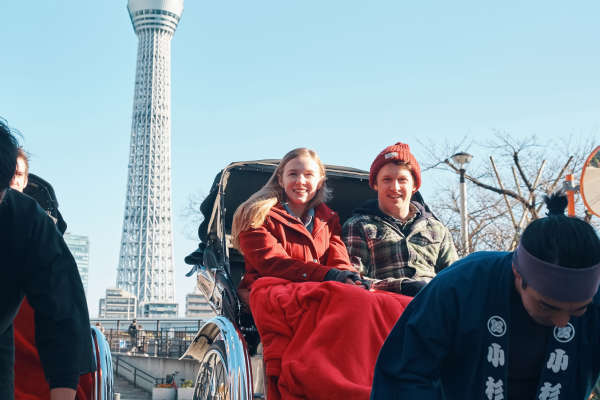
Around Tokyo Skytree, hop on a traditional rickshaw for a laid-back sightseeing spin through historic Asakusa.
Ride the local train and Shinkansen from Inawashiro Station back to Tokyo, then spend the day ticking off landmarks such as Tokyo Skytree, diving into the capital’s shopping districts, and savoring its endless fine-dining options.











